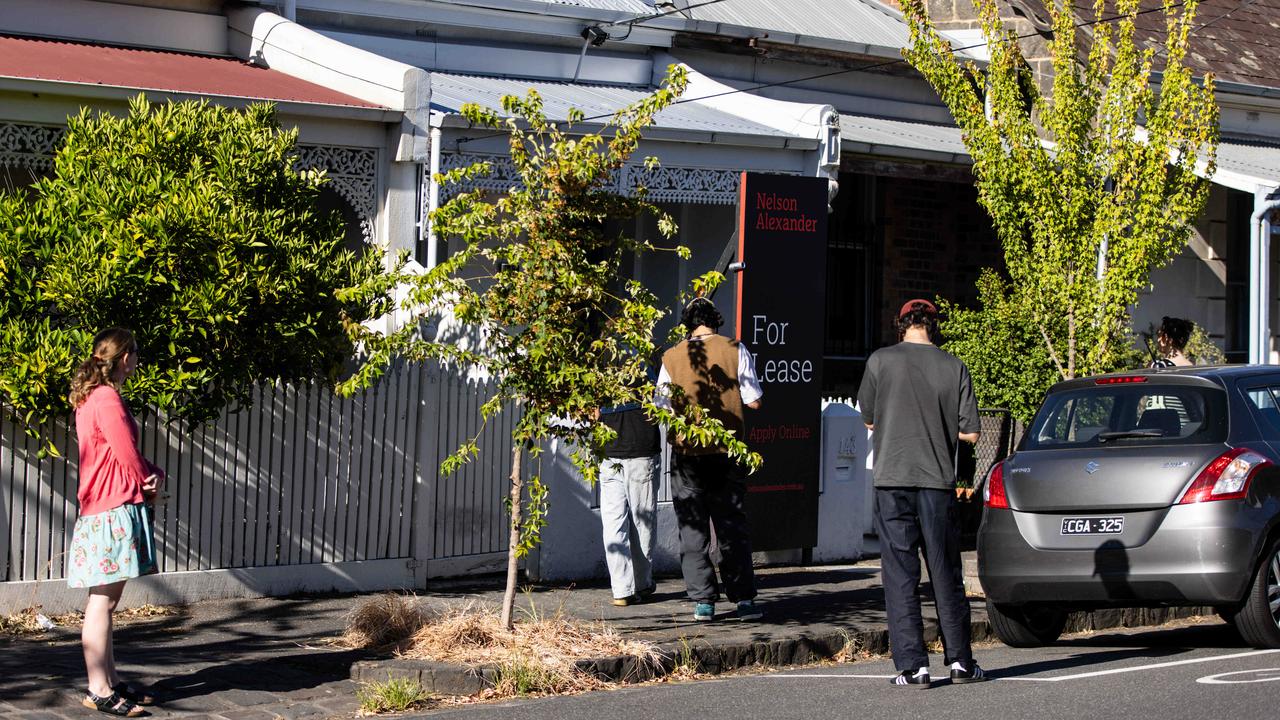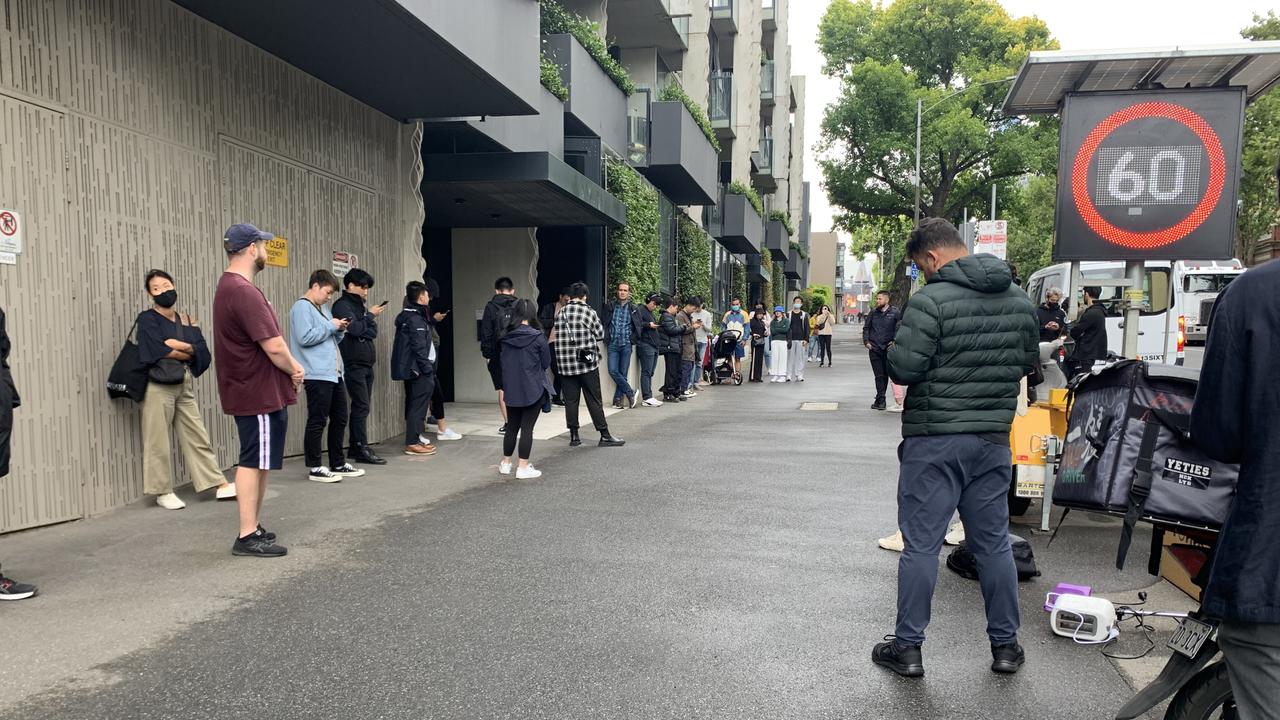Migration ‘hot spots’ where housing is being squeezed
Australian’s migration “hot spots” which saw double-digit rent increases from record overseas arrivals last year have been revealed.
Australian’s migration “hot spots” which received the highest numbers of overseas arrivals last year saw corresponding rental increases in some cases of nearly 30 per cent, new analysis has revealed.
The country’s population grew by a record 660,000, or 2.5 per cent, in the year to September to reach 26.8 million, Australian Bureau of Statistics (ABS) figures released in March show.
That was driven by record net overseas migration of 548,800, compared with natural increase of 111,000.
A report by research firm CoreLogic published on Friday analysed ABS data on the areas with the highest regional migration levels last financial year – driven by a combination of internal migration and overseas migration – and the impact on housing trends including prices and rents.
“Australia is slowly moving through an enormous (though temporary) spike in overseas migration,” CoreLogic head of research Eliza Owen said in the report.

All of the top 10 areas for regional migration identified by the ABS were in Sydney and Melbourne, and most of this was due to internal migration, accounting for about 90 per cent of the migration to six of the top 10 regions.
But CoreLogic found that internal migration appeared to have had little impact on house prices or rents.
“None of these areas with high internal migration saw a particularly big pick up in rents or home values in the same period,” Ms Owen said.
“That’s likely because the fresh housing supply of these areas is determining the population growth, and not the other way around. Off-the-plan house purchases likely mean that buyer demand in the suburb was spurred before people moved to these areas.”
The highest migration location in the country was Rockbank-Mount Cottrell in Melbourne’s west, which saw 3662 people added in the year to June 2023, comprising 3443 from internal migration and 219 from overseas.

There, rents increased by 7.2 per cent in the same period – well below the 11.3 per cent increase in greater Melbourne – while median home values declined by roughly 5 per cent.
The area has seen rapid development of new housing stock, with CoreLogic estimating it has more than doubled over the five years to June 2023.
Most of the internal migration to the area came from inner and northwest Melbourne, which “may represent people upsizing from smaller and/or rented property in more central locations, to detached houses that are relatively affordable”.
“Other top migration hot spots had similar characteristics where the change was largely explained by internal migration,” Ms Owen said.
“Box Hill-Nelson, Marsden Park-Shanes Park and Fraser Rise-Plumpton are all examples of ‘urban sprawl’, set on the fringes of Sydney and Melbourne, and attracting a fresh wave of demand from upsizers and family home buyers.”
However the report found there was a “weakly positive correlation” between net overseas migration and rental growth.

“There’s a very different dynamic for regions in the top 10 that saw the biggest migration because of net overseas migration,” Ms Owen said.
“These included Carlton, the Melbourne CBD-North and Melbourne CBD-South. As noted in previous research, the biggest short-term impact in areas that experience a rapid influx of overseas migration is in the rental market, with research from the ABS suggesting around 60 per cent of recent permanent migrant arrivals rented in Australia in the five years to 2021, and census data in 2021 showed around 65 per cent of temporary migrants were renters.”
In Carlton, which recorded 3722 net overseas arrivals but 405 net internal departures for total population growth of 3317, rents grew by 18 per cent.
And in Melbourne CBD-North, where there were 3043 overseas arrivals and 401 people leaving, rents increased by 28.9 per cent. Melbourne CBD-West saw rents increase by 25.2 per cent, with 2598 net overseas arrivals.
Given more than 90 per cent of last year’s 548,800 net overseas migrants were temporary, “there could be an even higher portion of recent migrant arrivals skewing to rentals than usual”.
“Net overseas migration volumes were also compared with value change, but there was no discernible relationship,” Ms Owen said.
“Similar to overseas migration and home value change, there was no relationship evident between internal migration and rents, and internal migration numbers and home value.”

Outside of Sydney and Melbourne, the highest migration numbers were in the Chambers Flat-Logan Reserve region of Brisbane.
“This market did have a notable uplift in rents through the year of 9.6 per cent, but this was only fractionally above the Greater Brisbane annual rent growth of 9.4 per cent,” Ms Owen said.
“Chambers Flat-Logan Reserve is another region with pockets of new housing development, and rose through the ranks when it came to the number of migrant arrivals, up to 17th highest nationally from 24th position in the year prior.”
Ms Owen said the takeaway was that “high migration levels can have a multitude of impacts on housing markets, which may depend on other factors like supply and affordability”.
More Coverage
“In the context of limited borrowing capacity, affordable markets on the fringes of Perth, Adelaide and Brisbane have attracted an increasing share of internal migration, rising through the ranks of migration hot spots, and attracting value growth,” she said.
“However, in some areas associated with urban sprawl, home values have not risen strongly at the same time migration volumes have been high, and may have to do with more balanced levels of supply, or the timing of off-the-plan purchases. The only migration housing performance relationship demonstrated in the data over the short term, and weakly at that, continues to be between overseas migration and rents.”






